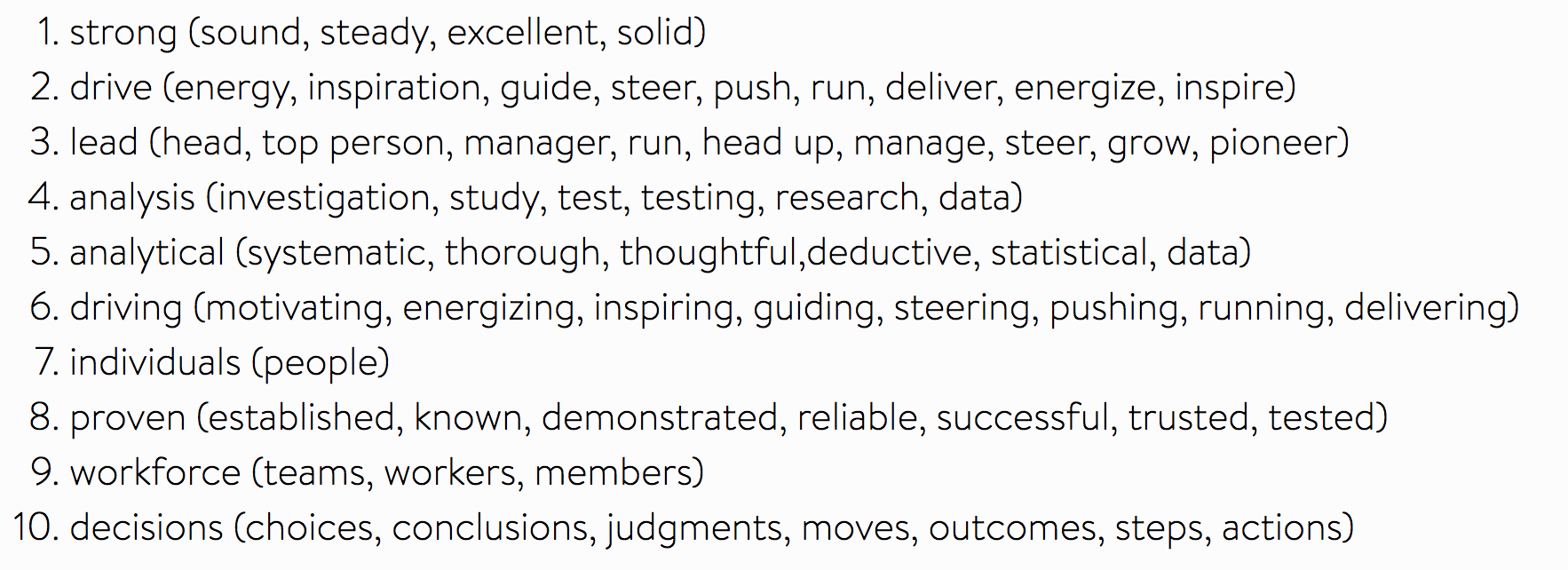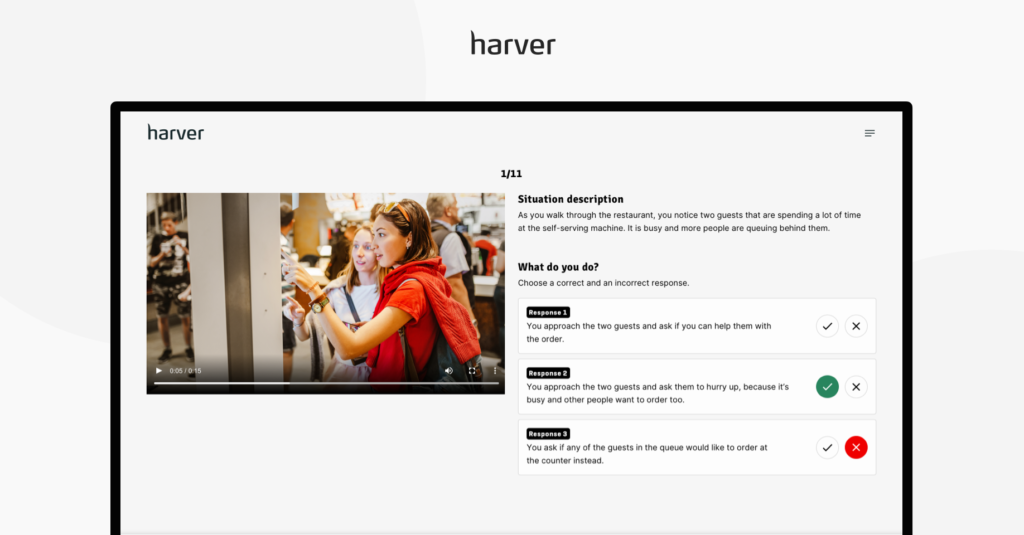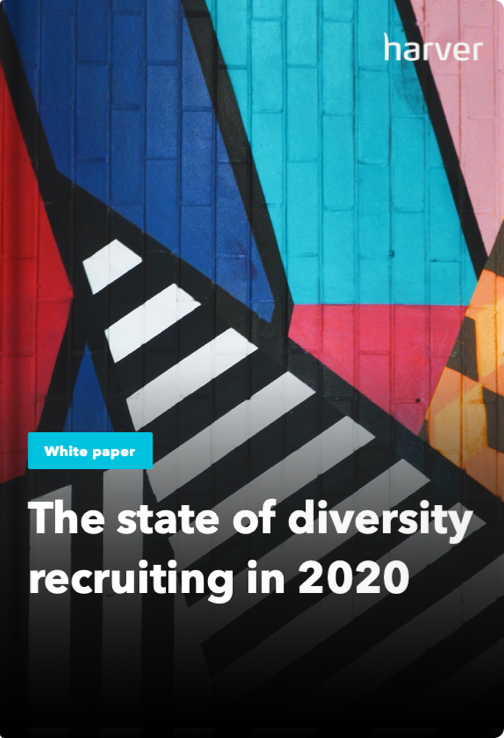Any kind of bias––even if it unconscious––can negatively impact the hiring process. When recruiters and hiring managers bring their own preconceived notions and ideas into reviewing applications, shortlisting applicants, holding interviews, and making hiring decisions, it creates an unfair field for candidates––and causes your organization to overlook some great potential new hires.
Companies in every industry and of every size are taking removing bias from their hiring process seriously. Major names like HSBC, Deloitte, BBC, and Google are all implementing blind hiring practices to ensure they’re bringing on the best talent.
But blind hiring isn’t just for the world’s biggest enterprises.
Let’s explore what blind hiring is, why it works, and how you can practice it at your own organization.
What’s in?
What is blind hiring?
Blind hiring reduces biases during the talent acquisition process by removing information like name, gender, religion, or socioeconomic background. It also removes things like academic qualifications or experience, meaning candidates are judged based on skills––not where they came from.
Theoretically, when the characteristics that may lead to a biased hire are removed from the equation, companies can guarantee they’re selecting the top talent for their open positions.
Therefore, if implemented thoughtfully, blind hiring can increase diversity and help your organization make stronger hires.
Blind hiring is mostly used during the screening stage, including removing names, candidate addresses, and schools attended from resumes, or in pre-employment testing, when data about applicants’ skills and characteristics is collected through assessments and the results are compared to pre-set benchmarks.
Women are
123%
more likely to have personally experienced gender discrimination when applying or interviewing for a job than men.
Source: PwC
But there are limitations of blind hiring. Even with names removed from resumes and tests, certain identity cues can still make their way through. Marginalized candidates might still experience subconscious penalties throughout the hiring process. Just implementing blind resume screening practices won’t be enough to fill those leaks.
Introducing principles of blind hiring to the interviewing stage of the recruitment process is also rather difficult. Anonymized written response is one way to conduct a blind interview, but this method often fails to pick up key skills and characteristics that might be important to the open role.
But blind hiring practices are still worth introducing to your organization. Let’s look at the ways you can implement it.
What are the blind hiring best practices?
There are a number of ways you can bring blind hiring processes to your organization. Here are some of the best.
Hear all about blind hiring on Recruitment On The Go!
1. Use inclusive job descriptions
If you want to increase the diversity of your team, you need to start at the very beginning of your recruitment process. Create inclusive job descriptions that encourage diverse candidates to apply.
Avoid using gender or other biases within your job descriptions. While using “he/she” might seem inclusive, using more generic terms like “the ideal candidate” is actually better.
Terms that might not seem gender-biased, such as “guys” or job titles like “chairman” can also give the wrong impression. It’s best to avoid them as much as possible.
Racial and age-related terms may also accidentally appear in job descriptions and could push candidates away from applying. For example, highlight the skills you need rather than put caps on years of experience.
Don’t forget to pay attention to using masculine, feminine and gender-neutral words you’re using in your job postings. Job listings with gender-neutral wording attract as much as 42% more responses.
It’s always best to be overly cautious than taking too much of a risk and potentially driving strong prospects away from the job and company altogether. Consider using a tool like Gender Decoder to make sure your jobs ads are as inclusive as possible.
Gender-Neutral Alternatives for the Top 10 Masculine Words in Job Descriptions
Subtle bias in job ads can have negative influence on the diversity of your candidate pool. If you want to learn more about de-biasing your job postings, check out the Ongig blog for a ton of great tips!
2. Select demographic information to hide
Name, zip code, headshots, and other information that appear on resumes can give off certain identity cues that make blind hiring impossible. However, sometimes demographic information is important for the hiring process, for instance, if you’re trying to see the initial results of your diversity recruiting program.
Consider what demographic information your hiring process can go without and remove this data from candidates’ resumes.
Look beyond what is typical. Identify information unique to your application process that could drive unnecessary bias during your hiring process. There are even lexical, syntactic and semantic differences in resumes of male and female job applicants. While this data is difficult to obscure, it is good to be aware of the bias it might introduce to the recruitment process.
The state of diversity recruiting in 2020
3. Obscure academic information
Going to a top college might seem like a resume booster, but having a 4.0 at the best university doesn’t necessarily predict success in a job. Likewise, a low GPA at a less-than-prestigious university isn’t a sign that an applicant isn’t capable of taking on the job.
Rather than looking at academic information, consider the skills that the candidate has.
Remove academic details from the resume. You can still keep specific information, such as what the candidate studied, but cover up any names or dates they attended (the graduation year can clue you in on the age of the candidate).
Likelihood of hiring a strong performer increases by only
4%
over random selection when choosing a candidate based on their GPA.
Source: The Validity and Utility of Selection Methods in Personnel Psychology study
GPA is not a reliable predictor of job performance. Consider removing the academic information from applications to ensure a fairer recruitment process.
4. Collect relevant data about your candidates’ skills
At this point, you might be wondering what you should base hiring decisions off of. Well, you need to collect that information.
Pre-employment assessments allow you to gather data about your candidate’s abilities, as well as softer skills like collaboration and integrity, their personality characteristics, or even their company culture preferences. Having candidates complete these assessments during the early stages of your hiring process can help you make less biased hiring decisions.
For example, for our clients who deal with high volume recruitment, we’ve developed a matching framework that helps recruiters select candidates based on skill sets and characteristics, while allowing applicants to evaluate their company fit at the same time.

Through a series of assessments, candidates are exposed to the company culture, work environment, the realities of the day-to-day job, and a series of critical incidents, which allow them to get a realistic preview of the job.
Assessments such as Situational Judgement Tests allow companies to screen candidates for job fit, while exposing candidates to critical work situations such as angry customers requiring their support, and so on.

5. Avoid social media pre-screening
Scanning candidates’ social media profiles has become routine during the hiring process. Unfortunately, if you’re searching for their online presence, you’ll gain a lot of information about the individual that could create bias.
You don’t have to remove social media screening completely from your hiring process, but it might be smart to move it further along in the process. While some information found on social media might create unconscious bias, you still want to be aware of any potential red flags before extending an offer.
A good time to start screening social media profiles is after the first round of interviews. This ensures you’ve gotten to know each candidate’s skills without bias, but also gives you an opportunity to eliminate a candidate from the running if their social media presence does not align with company values.
57%
of employers conducting social media pre-screening said they found information online that caused them not to hire a particular candidate.
Source: Careerbuilder
6. Consider anonymizing initial interviews
As we briefly mentioned, anonymizing an interview can be extremely challenging. Even phone interviews can clue you in on key characteristics like gender or age that may create biases.
You’ll need to meet face-to-face with your candidates sooner or later (after all, you need to know who you’re hiring), but anonymizing the initial interview can ensure you’ve selected the right candidates free from bias.
There are a number of ways you can conduct an anonymous interview. For example, emailing candidates a Q&A to fill out is one way to get responses. You could also have a live chat feature to better create a conversation with your candidate.
Another method that is becoming increasingly popular is automated interviewing robots. These chatbots conduct the initial interview and report back. This completely removes human bias from the equation.
Like what you see?
Don’t miss out. Subscribe to our quarterly digest to get the latest TA and TM resources delivered right to your inbox.
7. Track the before and after state
If you’re going to take the time to implement new processes into your talent acquisition strategy, you want to know how well it works. Tracking the “before” state and the “after” state can help you measure effectiveness.
Take a look at the standard demographics of candidates and hires before implementing blind hiring practices, as well as the after. Have you attracted and interviewed more diverse candidates? Is this leading to more diverse hires?
75%
of employees say that diversity is gaining momentum at their organizations.
Source: BCG
You’ll need to take a bit of time to collect this data. If your organization is hiring frequently, just a few months should be fine. However, if you’re hiring only every few months, you might need to wait about a year before you look back at the data.
If you find that blind hiring processes aren’t improving your diversity, you may need to take additional steps to remove biases and optimize your hiring process.
We’ve detailed the topic of building a data-driven diversity and inclusion strategy in the article below.
8. Keep educating your team about unconscious bias
Techniques like blind hiring can help remove unconscious bias from your hiring process, but they won’t do the job completely. If your team is operating with biases, even if they are unconscious, strong candidates may fall through the cracks or be overlooked.
Your team needs to be educated on unconscious bias and what kind of damage it can do to your hiring process and even the organization as a whole.
Provide examples of the many ways bias can appear, particularly when bias is unintentional. Give access to different trainings about how to recognize these biases, both in coworkers and in themselves.
Encourage your employees to use what is called substitution. They should ask themselves if they would still feel the same way if one person was substituted for another. Would they still respond the same way?
Finally, teach your team how they can reduce and eliminate these biases during the hiring and interviewing processes.
9. Recognize blind hiring isn’t a magic solution
Blind hiring can work, but it isn’t going to solve all your diversity and inclusion issues. While it can ensure strong candidates make it further in the interview process regardless of their background, it’s not realistic to have a completely blind hiring process––meaning eventually, unconscious bias can make its way in.
This means you should be taking additional steps to remove bias from your hiring process––particularly efforts closer to the end of the process. Next to practicing blind hiring, focus on implementing other strategies such as assembling diverse interview panels and using interview scorecards to evaluate candidates.
1/3
employees say they know of any diversity initiatives where they work.
Source: Glassdoor
To wrap it up
Blind resume screening is a relatively easy way to reduce bias in the hiring process. However, blind hiring in general is not completely straightforward. While removing basic demographic information from resumes isa good start, adding blind practices throughout the recruitment funnel can take some creativity.
Even so, blind hiring can be very beneficial to your organization.
Skills measuring, anonymized assignments, and blind initial interviews are all great ways you can include bias-reducing practices throughout your entire recruitment funnel.
Try new things and experiment with different methods. Look for gaps that may still be open and come up with new strategies to ensure they’re filled in. Use analytics and specific metrics to gauge how well you’re reaching diverse audiences and make adjustments as necessary.
As you find the best methods that work for you, you can improve diversity and create a stronger recruitment and hiring process.
The state of diversity recruiting in 2020



